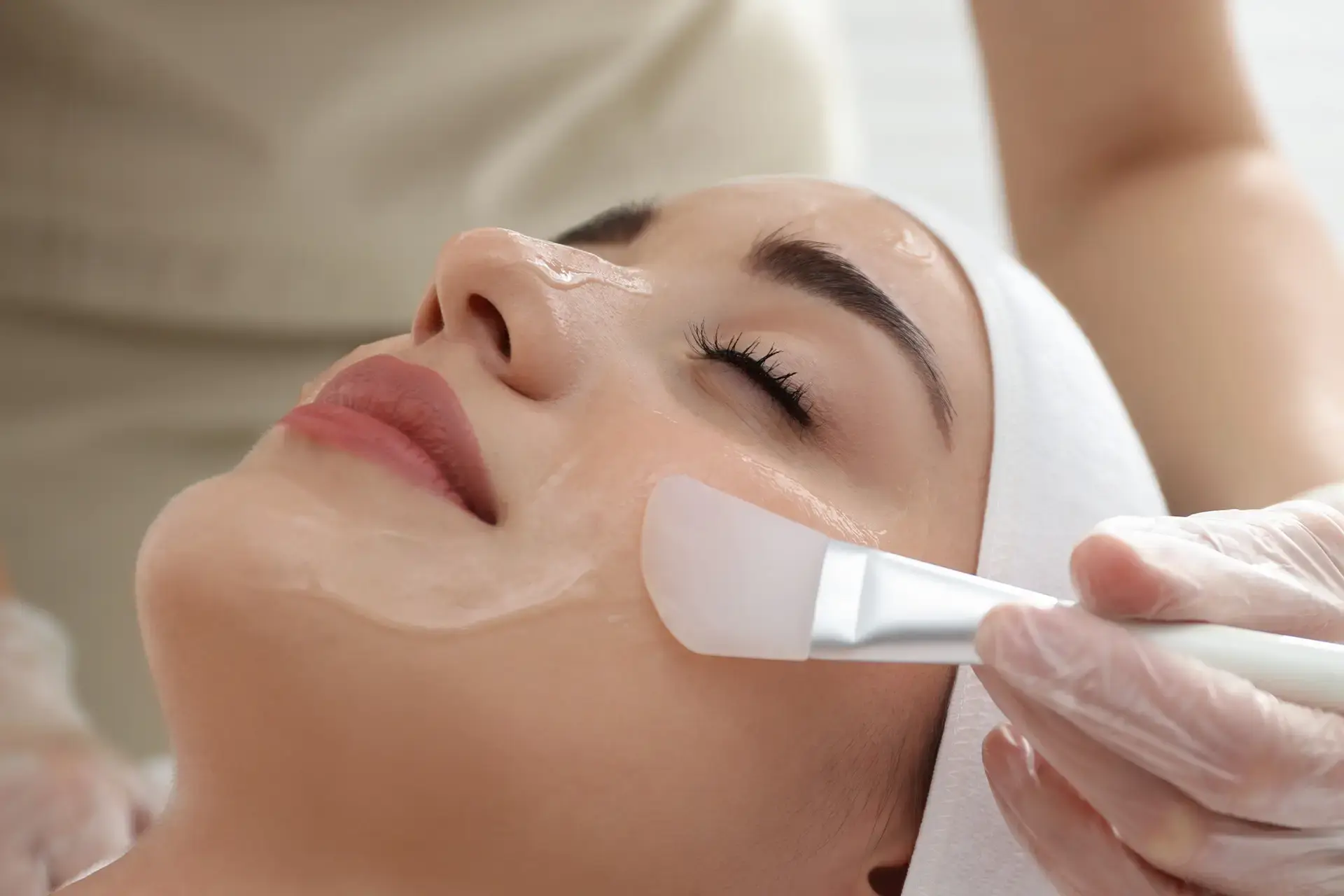How Often Should You Get Chemical Peels?

Chemical peels are among the most effective aesthetic facial treatments for addressing concerns like dullness, fine lines, acne scars, and uneven texture. Once you experience the transformative glow of a professional peel, you may find yourself wondering: When can I get another one?
The answer isn’t one-size-fits-all. Chemical peel frequency depends on several factors, including:
- Your skin type
- Level of chemical peel
- Your skincare goals
- How your skin reacts to treatment
In this article, we’ll break down the different types of chemical peels, their benefits, and how to determine the best schedule to maintain your healthiest, most luminous skin.
What are the Different Types of Chemical Peels?
Peels are generally categorized into three levels: light, medium, and deep, each offering a different degree of exfoliation and renewal.
Light Chemical Peels
Light (or superficial) chemical peels gently exfoliate the outermost layer of skin to reveal a fresher, more radiant complexion, making them ideal for treating mild discoloration, dryness, fine lines, and acne. Some minor flaking or redness may occur for a day or two, but overall, recovery is minimal. Because light peels are milder, they can typically be repeated every 4 to 6 weeks for maintenance. Patients with more resilient skin or those treating acne may schedule peels more frequently, but biweekly sessions should only be done under professional supervision to prevent over-exfoliation.
Medium Chemical Peels
Medium-depth peels penetrate deeper into the skin, targeting moderate wrinkles, hyperpigmentation, and acne scars. They work by removing damaged outer layers and stimulating collagen production for a more even, youthful complexion. Because they provide deeper exfoliation, you may notice redness, peeling, and sensitivity for about 5 to 7 days after treatment. Since medium peels penetrate deeper into the skin, they require more time for healing. Treatments are typically spaced every 4 to 8 weeks, depending on skin sensitivity and treatment goals. Patients seeking correction for moderate pigmentation or acne scars may undergo a series of 3-6 peels over several months.
Deep Chemical Peels
Deep chemical peels dramatically improve severe wrinkles, sun damage, and deep scars by reaching the lower layers of the skin. These peels are performed under medical supervision and require a longer recovery period. Due to the intensity of deep peels, redness, and peeling can last for several weeks. Due to their intensity, deep chemical peels are performed less frequently—typically every 1 to 2 years, though some individuals may only need one in their lifetime. This treatment requires significant recovery time and should be done under the guidance of a board-certified provider.
The Transformative Benefits of Chemical Peels
Chemical peels do more than just exfoliate—they promote deep skin renewal, reduce imperfections, and enhance long-term skin health.
Here’s what you can expect:
- Skin that appears firmer, smoother, and more rejuvenated due to increased collagen production and cellular turnover
- Softer, healthier, more resilient skin you can see and feel.
- A treatment that’s tailored to your skin’s unique needs—no one-size-fits-all approach.
- Clearer skin with fewer breakouts, reduced redness, and faded post-acne marks.
- Better absorption of your skincare products for maximum effectiveness.
- Long-term skin transformation with consistent treatments—improving tone, texture, and elasticity over time.
The Importance of Aftercare Maintenance
A chemical peel does the heavy lifting of exfoliating and renewing your skin—but what you do afterward is just as important. Proper chemical peel aftercare ensures optimal healing, enhances results, and protects your skin from irritation or damage. Be sure to follow your provider’s instructions, which may include recommendations such as:- Light Peels: Mild redness or dryness may last 1-3 days.
- Medium Peels: Peeling and flaking typically occur for 5-7 days.
- Deep Peels: Redness and skin regeneration continue for several weeks to months.
- Universal Aftercare:
- Wear broad-spectrum SPF 30+ daily to prevent hyperpigmentation.
- Avoid retinoids, exfoliants, and AHAs/BHAs for at least 7 days post-peel.
- Keep skin hydrated with a gentle, fragrance-free moisturizer.
- Refrain from picking or peeling skin manually to prevent scarring.
How to Determine the Right Peel Frequency for You
A personalized consultation with a licensed medical aesthetician or skincare expert in San Antonio is the best way to determine the right frequency for you. PREEMA offers professional skin resurfacing treatments to help clients achieve their best skin. We take a personalized approach to skincare, ensuring that every chemical peel is tailored to your unique needs. Our medically-trained providers will evaluate your skin, discuss your goals, and design a treatment plan that maximizes results while keeping your skin healthy and balanced.
Ready to achieve your best skin? Book your consultation today at our San Antonio medspa, and let us guide you toward a glowing, healthier complexion.


